Japanese diet is an effective way to reduce weight.With the right approach in a couple of weeks, you can launch about 8 kilograms.
Many people represent the essence of the Japanese diet to eat shellfish, however, this is a big mistake.Its principles are products that consume a high protein content and a low percentage of carbohydrates.The duration of the diet is at least 7 or 14 days, depending on the goal.During this time, the body manages to rebuild and adapt to a relatively rigid regime.
The main principle of the Japanese diet is a clear sequence.It is forbidden to replace the allowed foods with analogues and increase the amount of food.The result will affect the general health of a person, their lifestyle, activity and bad habits.
Characteristics of the Japanese diet
The diet is based on the nutrition principle of the inhabitants of the East.The diet includes a variety of food and low calories.According to the Japanese, eating should leave an easy feeling of hunger.
The peculiarity of the Japanese diet is based on a gentle restructuring of the body.Light proteins, vegetables and fruits are taken as a base.They do not overload the body, give a sense of moderate satiety and saturate the body with the necessary vitamins.The diet implies three meals a day, excluding any snack.
It is important to properly prepare the body for a new type of nutrition not to apply stress.A strong rejection of sweet and salty, flour and fried is a strong blow to an unprepared person.
Rule No. 1: To gradually reduce the calorie content of food and, step by step, exclude fried and fatty foods, alcohol, carbonated drinks, sweet and salty.The rejection of sweet tea will already bear fruit.
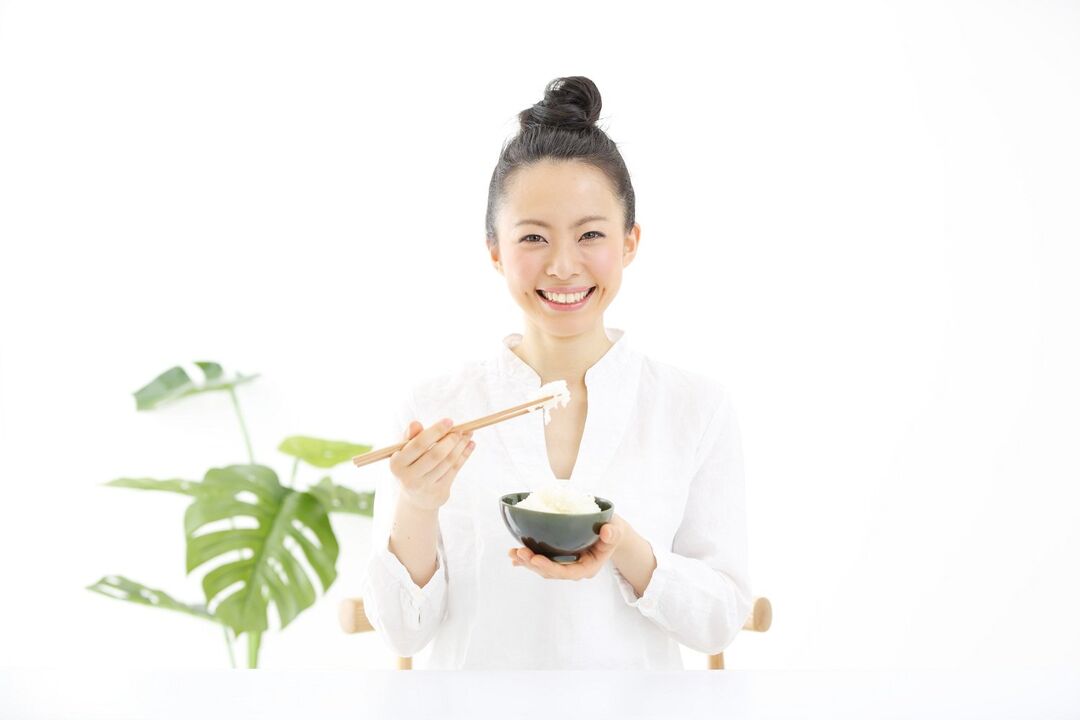
The benefits of the Japanese diet
The advantage of the Japanese diet lies in the long -term result.Subject to the principles, it can get rid of excess weight for a long time.The menu has no flour, fat and sweet, which already affects the harmony of the figure.The Japanese diet allows you to get rid of toxins and clean the body.
The benefits of the Japanese diet:
- It allows you to lose weight without damage to the body and not win it immediately after the cessation.
- Includes simple products that can be purchased at any store.
- There are no exotic ingredients for the high cost in the list of allowed products.
- The maximum duration of the diet is 14 days, this is not so many, compared to other methods with less efficiency and longer duration.
- Eating is only 3 times a day, which excludes the need to carry several containers with different foods with you.
The disadvantages of the Japanese diet
In addition to the positive points, the Japanese diet implies a list of disadvantages:
- Do not consume in the form of a high content of proteins, fats and low carbohydrates.This energy method contains few vitamins.They can even negatively affect the skin, hair and nails adversely.The nervous system will also react to this fact, giving a reaction in the form of irritability and low performance.
- Critically low calorie content per day.The minimum daily standard must be approximately 1000-1200 kcal.Having organized an fasting regime for the body, it cannot count on the ability of strong physical effort and sports.
- A low calorie diet with a small amount of carbohydrates can lead to muscle loss.Such nutrition says goodbye to stress hormone and improve catabolism.
- Due to a rare meal, there is a need for a refreshment that is excluded during nutrition in the diet.This fact can be a source of breakdown.
- The diet is based on hard rules and restrictions.Not all people can adhere to the regime and not break the exit.
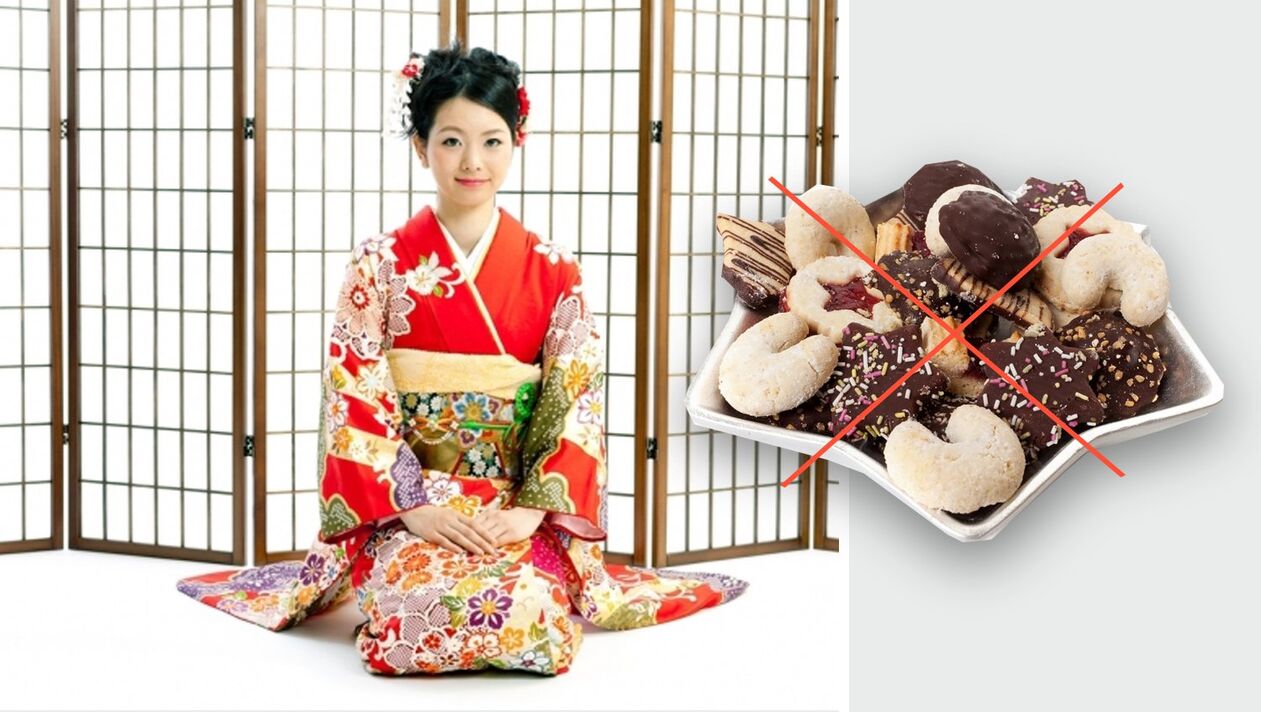
Allowed and prohibited products in the Japanese diet
Traditional low qualification products are the basis of the Japanese diet.
Allowed products:
- Chicken fillet;
- beef;
- Whitefish;
- cheese;
- Bulgarian pepper;
- cucumber;
- eggs;
- Cabbage White and Beijing;
- carrot;
- all fruits, with the exception of grapes or banana;
- Kefir without fat;
- tomato juice;
- green tea;
- coffee;
- Olive or vegetable oil.
The list is not allowed to change or add other components.The consumption of the correct products should no longer be800 kcalper day.Salt and sweet during the diet are completely excluded from the diet.
Prohibited products:
- honey, sugar;
- spices, salt;
- alcohol and carbonated drinks;
- flour products;
- sweets.
It is worth remembering the daily norm of drunk water, which is at least 1.5 liters per day.The liquid is the basis of adequate nutrition.
Contraindications of the Japanese diet
Such diet is adequate only for healthy people, without obvious chronic diseases.A hard regime cannot benefit or get the situation completely.
Japanese diet contraindications list:
- stomach diseases and intestines (gastritis, ulcer, disorders, etc.);
- cardiovascular system diseases;
- diabetes mellitus;
- endocrine diseases;
- pregnancy;
- gallbladder and liver diseases;
- Overweight.
The Japanese diet only adjusts the figure.This method should not be expected to reduce the weight in 30 kilograms.Obesity is a complex disease that needs an integrated approach and the observation of a competent doctor.During the diet, a person suffering from such a disease can find metabolic disorders and an additional weight gain.
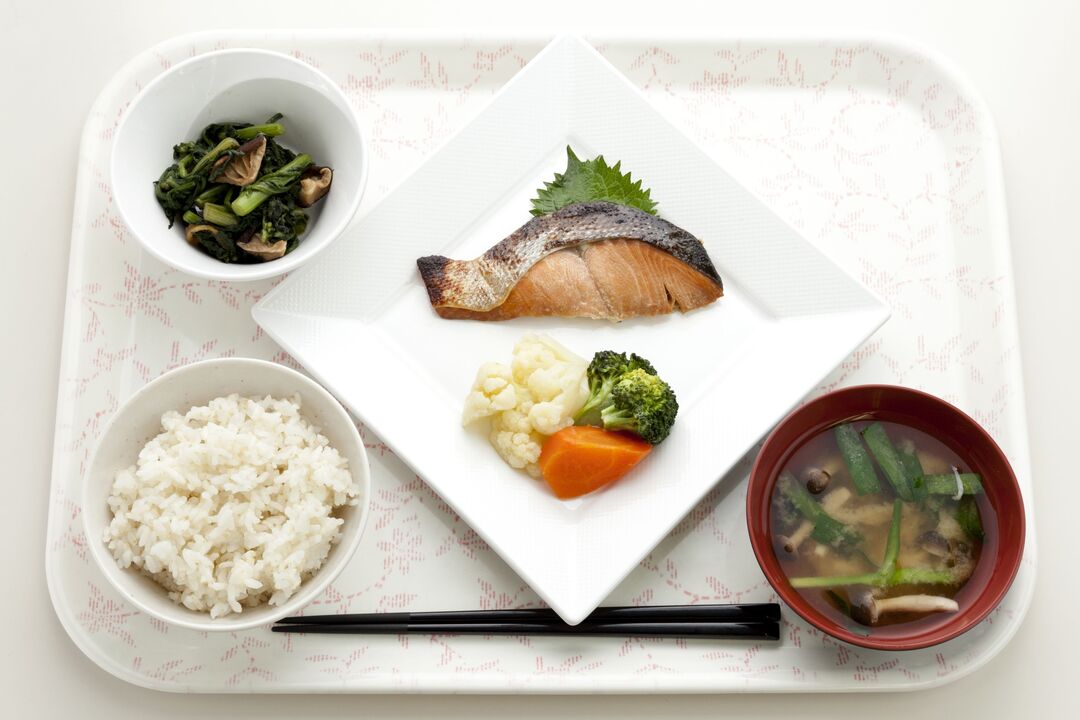
Japanese diet menu for 7 days
A seven -day diet is perfect for people with insignificant kilograms they would like to get rid of.A weekly methodology corrects and draws the figure.This method affects the most effective people who do not feel regularly in several diets.The worst indicators of the people who are in search and constantly change one diet to the other.
On the eve of the diet, it is better to spend a day of fasting, drink kefir or yogurt, dinner with boiled rice with vegetables.
Consider in detail the menu of the Japanese diet for 7 days.
1 day
- With an empty stomach, drink a glass of resistant water.The body will awaken and eliminate toxins.
- After 30 minutes you can drink coffee.
- Lunch: a pair of boiled eggs, cabbage salad, tomato juice with meat of 200 ml.
- Dinner - boiled fish.
2 days
- The morning consists of a cup of coffee and cookie.
- For lunch, eat boiled fish and cabbage salad.
- The dinner consists of 100 g of cooked beef and 200 ml of kefir.
3 days
- Breakfast will be the same as the day before.
- For lunch, place the zucchini.
- Before bedtime, eat a pair of boiled eggs, 200 grams of beef and cabbage salad.
4 days
- Breakfast is still the same.It is important not to forget that milk, cream and sugar cannot be added to coffee.
- Boil carrots at lunch, eat 15 g of cheese and 1 egg.
- Dinner consists of 2 blocks.
5 days
- On the fifth day of the morning, as boiled carrots, sprinkling them with lemon juice.
- Lunch: tomato juice and boiled fish.
- Dinner is a couple of apples.
6 days
- In the morning, a cup of coffee is allowed.
- For lunch, cook 500 grams of chicken and prepare cabbage salad with grated carrots.
- Dinner is a cabbage salad and a pair of boiled eggs.
7 days
- The final breakfast is a cup of green tea.
- For lunch there are 200 g of boiled meat and fruit to choose from.
- Choose dinner from any point, except the third.
In a week you can get a stable result."Japanese" allows you to maintain the effect for a long time.After a diet, it is important to observe the correct output and consume the daily water rate.A successful exit will maintain the result and normalize metabolism.
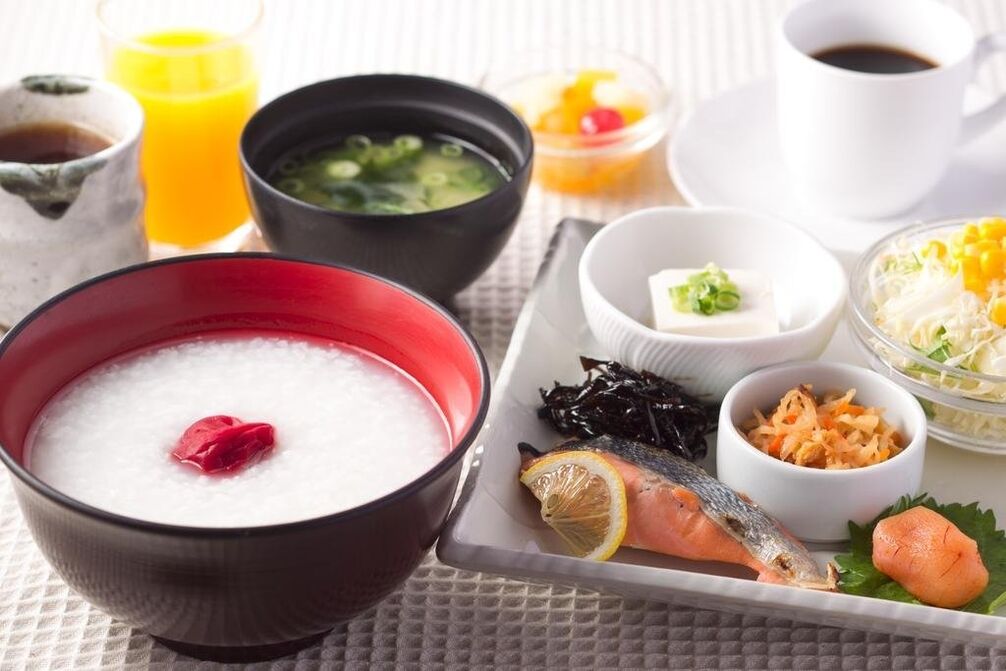
Japanese diet for 14 days
Using such a Japanese diet menu for 14 days, it can fall to 10 kilograms.In addition to the diet, you should not forget to drink 1.5-2 liters of water per day, this helps normalize metabolism and eliminate toxins.
First week
1 day
- Tomorrow- 2 soft eggs, green tea.
- Dinner- 200 g of boiled chicken fillet, cabbage salad with vegetables or olive oil.
- Evening- Low fat yogurt, green tea.
2 days
- Tomorrow- A cup of coffee, low -fat cabin cheese.
- Dinner- Stewed veal (200 g), a rating carrot salad with olive or butter.
- Evening- 250 ml of kefir.
3 days
- Tomorrow- Coffee, rye cookie.
- Dinner- cabbage salad, 200 grams of boiled chicken breast.
- Evening- Col Brussels, baked with patch beans (250 gr).
4 days
- Tomorrow- A cup of green tea, 2 soft eggs.
- Dinner- 200 grams of stew, a cucumber and cabbage and bulgar pepper salad.
- Evening- Artisanal cheese (200 gr).
5 days
- Tomorrow- A glass of yogurt, a cup of green tea.
- Dinner- Carrot salad with oil, 200 g of boiled veal.
- Evening- 250 ml of kefir.
6 days
- Tomorrow- A cup of coffee, rye cookie.
- Dinner- 200 grams of boiled sea fish, 100 g of cabbage of Brussels baked with patch beans.
- Evening- Any fruit to choose from (except forbidden), tomato juice.
7 days
- Tomorrow- Artisanal cheese (200 gr).
- Dinner- Cabbage salad with butter, 200 grams of boiled chest.
- Evening- 200 grams of stew, a salad with a cucumber.
The second week
1 day
- Tomorrow- A cup of green tea, 2 soft eggs.
- Dinner- 200 grams of beef, salad with cabbage and carrots.
- Evening- 200 grams of boiled fish, cucumber and pepper.
2 days
- Tomorrow- Coffee, rye cookie.
- Dinner- Cabbage salad with butter, 200 grams of boiled chicken fillet.
- Evening - 250 ml of kefir.
3 days
- Tomorrow- Artisanal cheese (200 gr).
- Dinner- 200 grams of boiled sea fish, 100 grams of cabbage of Brussels baked with patch beans.
- Evening- A glass of yogurt, a cup of green tea.
4 days
- Tomorrow- A cup of green tea, 2 soft eggs.
- Dinner- Carrot salad with butter, Guiso veal (20 g).
- Evening- Tomato juice, any fruit to choose from.
5 days
- Tomorrow- Green tea, a glass of yogurt.
- Dinner- Cabbage salad with butter, 200 g of boiled chicken fillet.
- Evening- Carrots with oil, 200 grams of stewed veal.
6 days
- Tomorrow- Coffee, rye cookie.
- Dinner- Guisado zucchini, baked or boiled fish (200 gr).
- Evening- Kefir (250 ml).
7 days
- Tomorrow- Coffee, 2 eggs.
- Dinner- 100 g of boiled meat, cabbage salad.
- Evening- An apple, tomato juice.
Due to small portions at the end of the dietary marathon, the stomach decreases and the body is customary to dose food.A balanced diet after maintaining the result for a long time.
Japanese diet recipes
Consider in more detail the simple and tasty recipes of the Japanese diet.
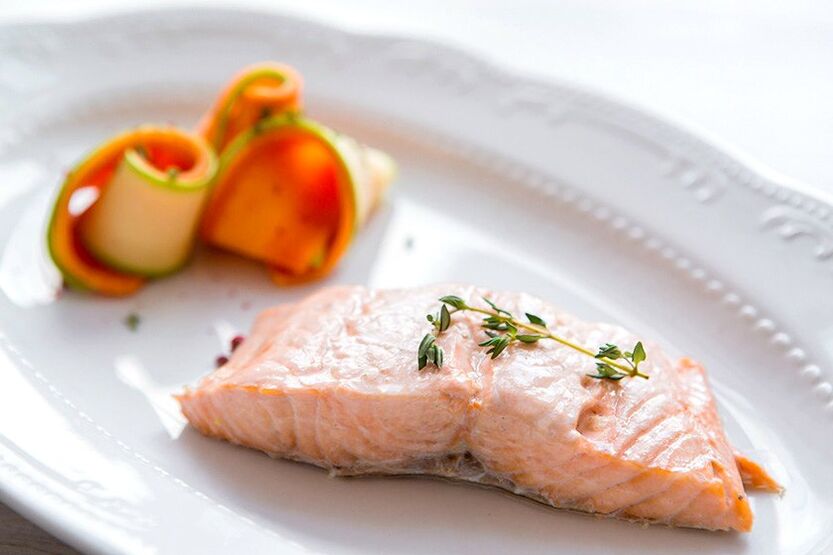
Steam fish
A steamed fish is a wonderful dietary dish.It is very simple to prepare, which requires a minimum of components.
The cooking method is very simple.You will need any sea fish.It is better to choose what there are small bones.Routle fish and get rid of the interior, rinse well in running water and dry with a napkin.It is better to reject salt or spices, since this contradicts the principles of the diet.Slightly lubricate the fish with olive or vegetable oil and sprinkle with lemon juice.Lemon slices can be placed under the gills.
The dish can be prepared both in a double boiler and in the oven, using foil.The cooking time is 15-25 minutes, depending on the type and size of the fish.
Cabbage salad with carrots
A cabbage salad with carrots, with the addition of Bulgarian pepper and (o) cucumber is an integral part of the Japanese diet.It can act as an independent dish or be a garnish.
To prepare a salad, only 2 ingredients will be needed: carrots and cabbage, the rest are added as desired.The cabbage the cabbage pica and moves with your hands to make it softer and give it juice.Carrots are rubbed on a large grater, added to chopped cabbage.Mix.If too many liquids have been released, it is better to drain it.In the end, season with any oil.

Japanese diet
The soft japanese diet exit will help maintain a long -term result.At the end of the diet, it cannot immediately return to the usual diet.
The following actions will help soften the transition:
- oatmeal -shaped breakfast or saracen wheat porridge, air and only squeezed juice tortilla;
- lean meat or chicken fillet with vegetables and rice;
- refrigerium with kefir, cottage cheese or yogurt;
- Baked chicken and kefir breast dinner.
It is important to understand that, having finished the diet with a sweet party, it can completely cross out the result and return undesirable kilograms.The main rule of the Japanese is moderation.At the exit, you can return the usual products one per week.
Any diet implies a temporary result.The restrictions are finishing: additional pounds return.Unlike other methodologies, Japanese technique has a long effect.The condition is to observe eating habits and restructure the body to healthy nutrition.
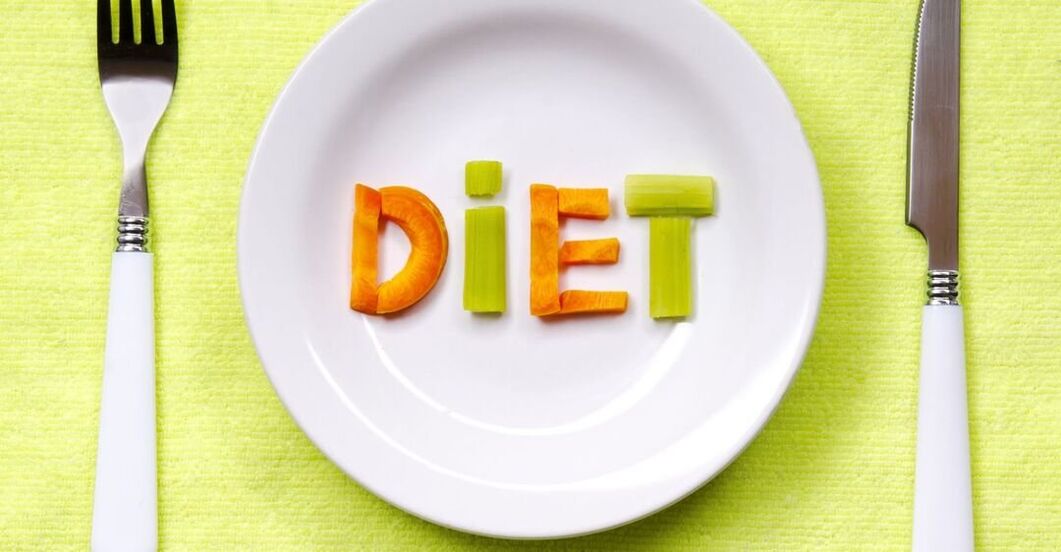
Nutritionist reviews about the Japanese diet
According to the diet, the Japanese diet is considered a difficult method to eat, since the human body is difficult to tolerate low carbohydrates.This principle is suitable for people with good health and without obvious diseases.In addition, it does not adapt to people with high physical activity and loads at all.During strength training, there is a risk of dizziness and even fainting.But this energy system is ideal for people who lead a passive lifestyle.Light discomfort during the first days is the norm, however, lack of strength and weakness is a sign that this diet gives the body a great stress and it is better to abandon it.
The correct method of losing weight includes a sequence, rationality and correct mode.Each person is individual, which can reach one, does not adapt to the other.It all depends on the individual characteristics of the body.Having chosen a particular diet, it is necessary to strictly monitor its good and reaction to the diet.
Before organizing a dietary marathon, it is necessary to properly prepare not only your body, but also the head for the next weight loss.The dreams of the perfect figure and the right mood will help not break and achieve the desired result.

































































